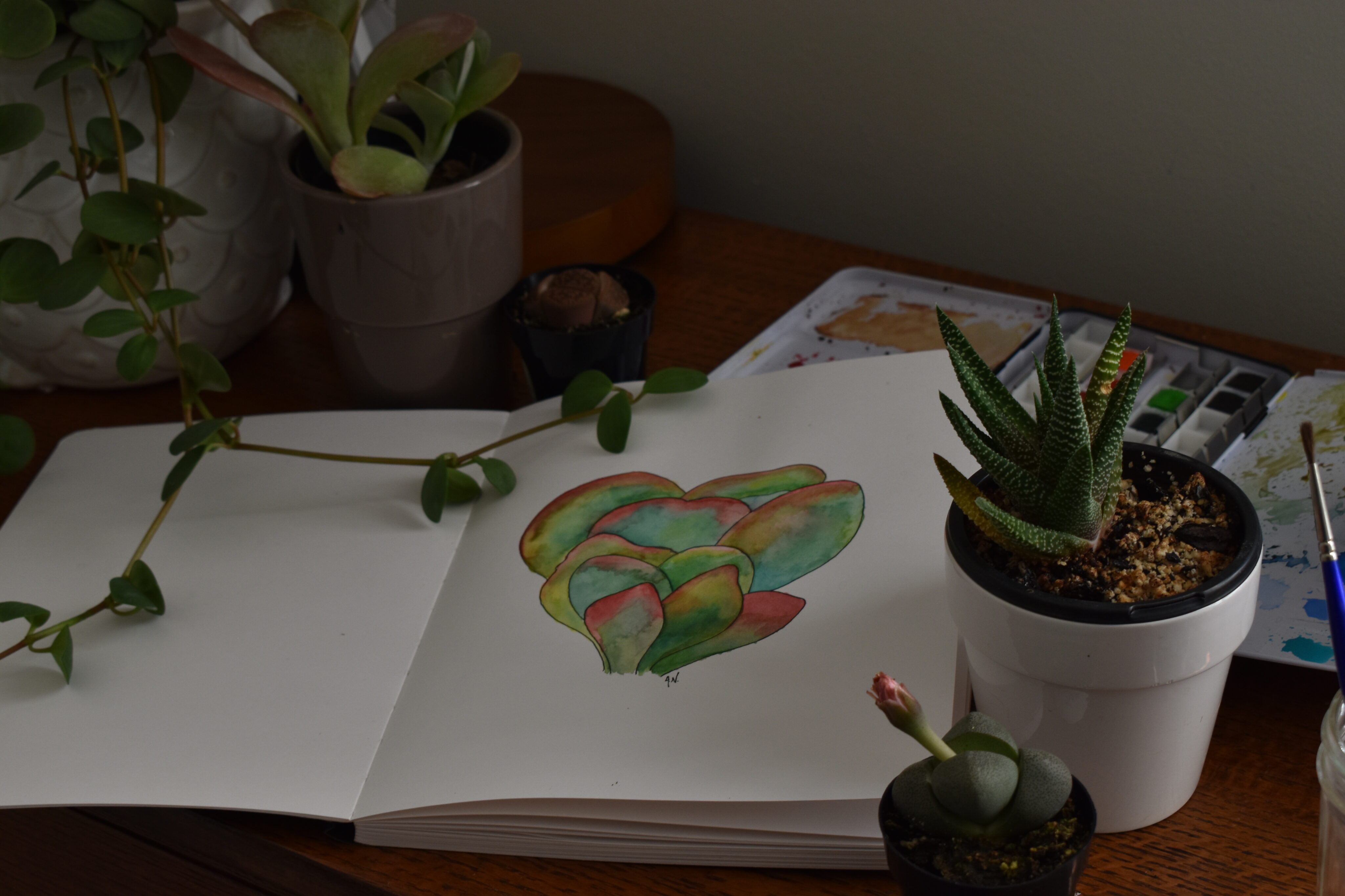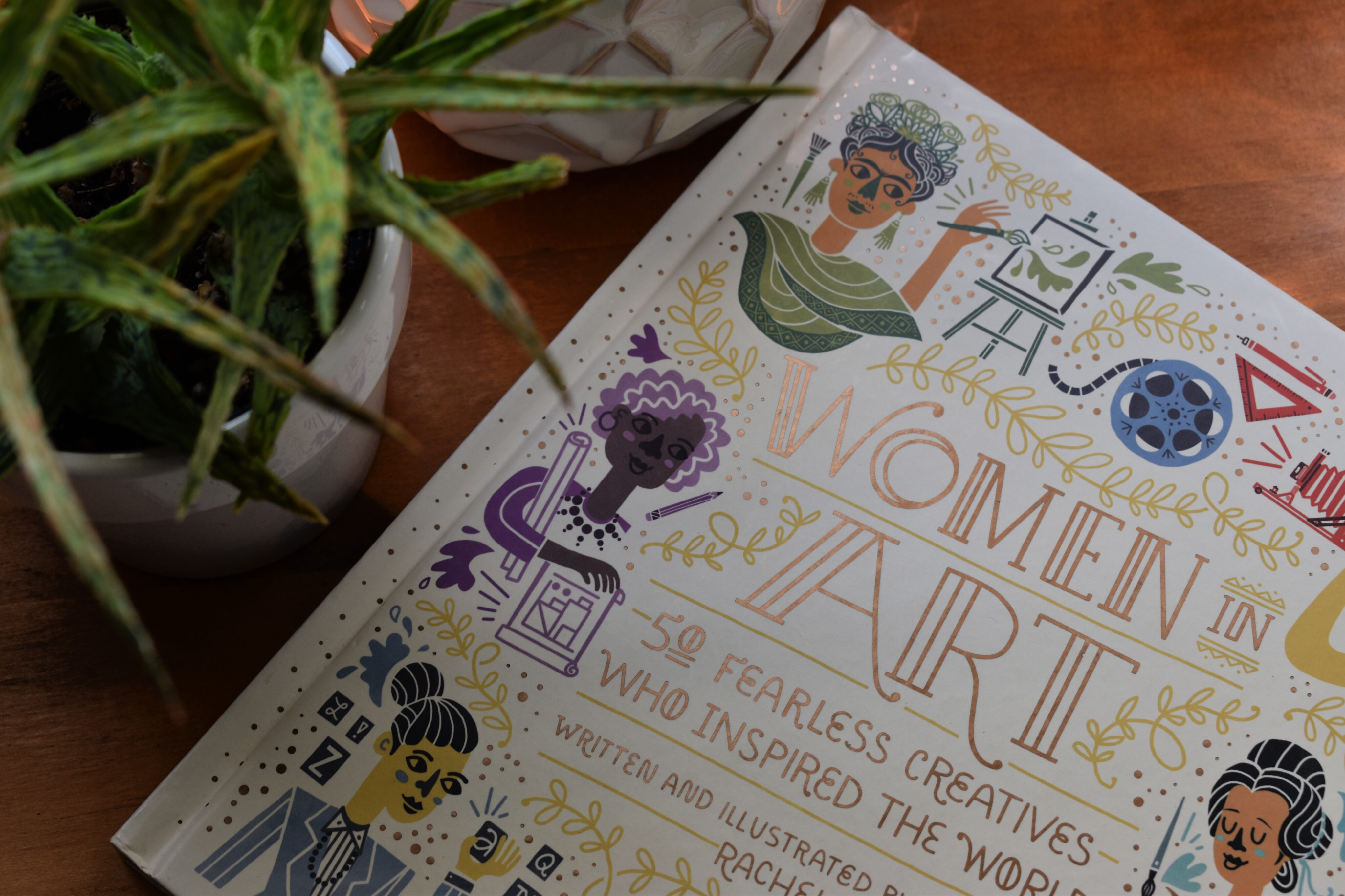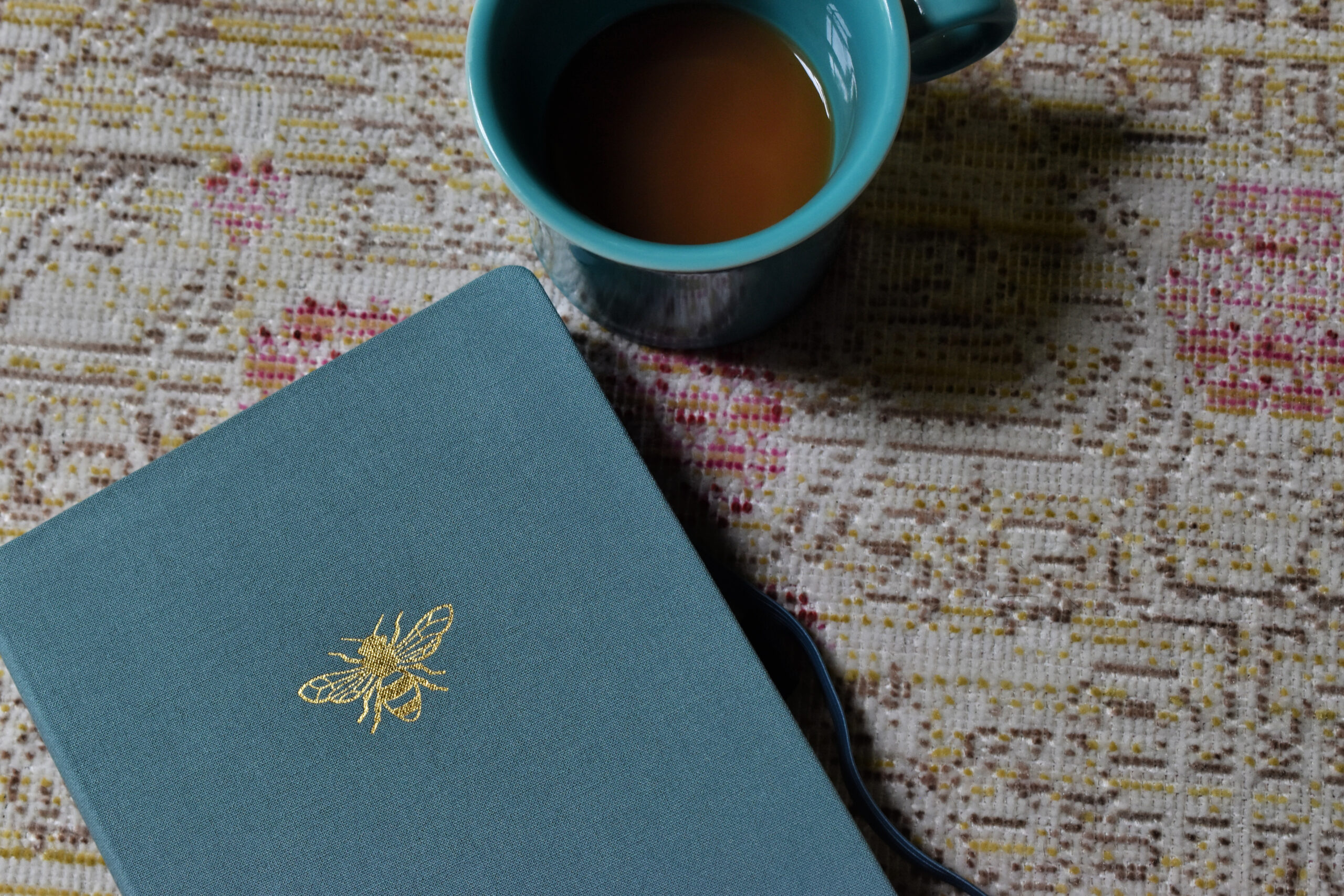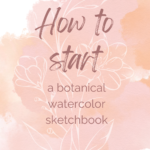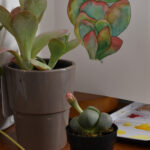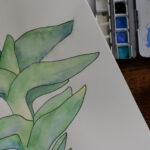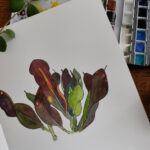Life of Noveltea participates in affiliate marketing programs for products I love, including Amazon Affiliates. I may earn a commission on purchases made through my links at no extra cost to you. Thanks for supporting my work!
One of the ways I enjoy my indoor plant collection is by turning it into houseplant art. I started with a sketchbook and am working on some larger pieces for wall art. Houseplants are a perfect introduction if you’re interested in learning botanical drawing. They are inexpensive and come in a wild variety of shapes and styles. In today’s post, I will share where to find plants and the tools you need for your sketchbook.
Where to learn this technique
My houseplant art project started when I took the Botanical Sketchbooking: a Meditative Approach (#ad) class with Domestika. The class is so much fun, and I loved learning this style of sketchbooking. The artist teaching the class focuses on observing each plant a leaf at a time. It makes the process incredibly accessible. He also teaches setting up a watercolor palette using blues and yellows to custom-blend the greens you observe in your houseplants.
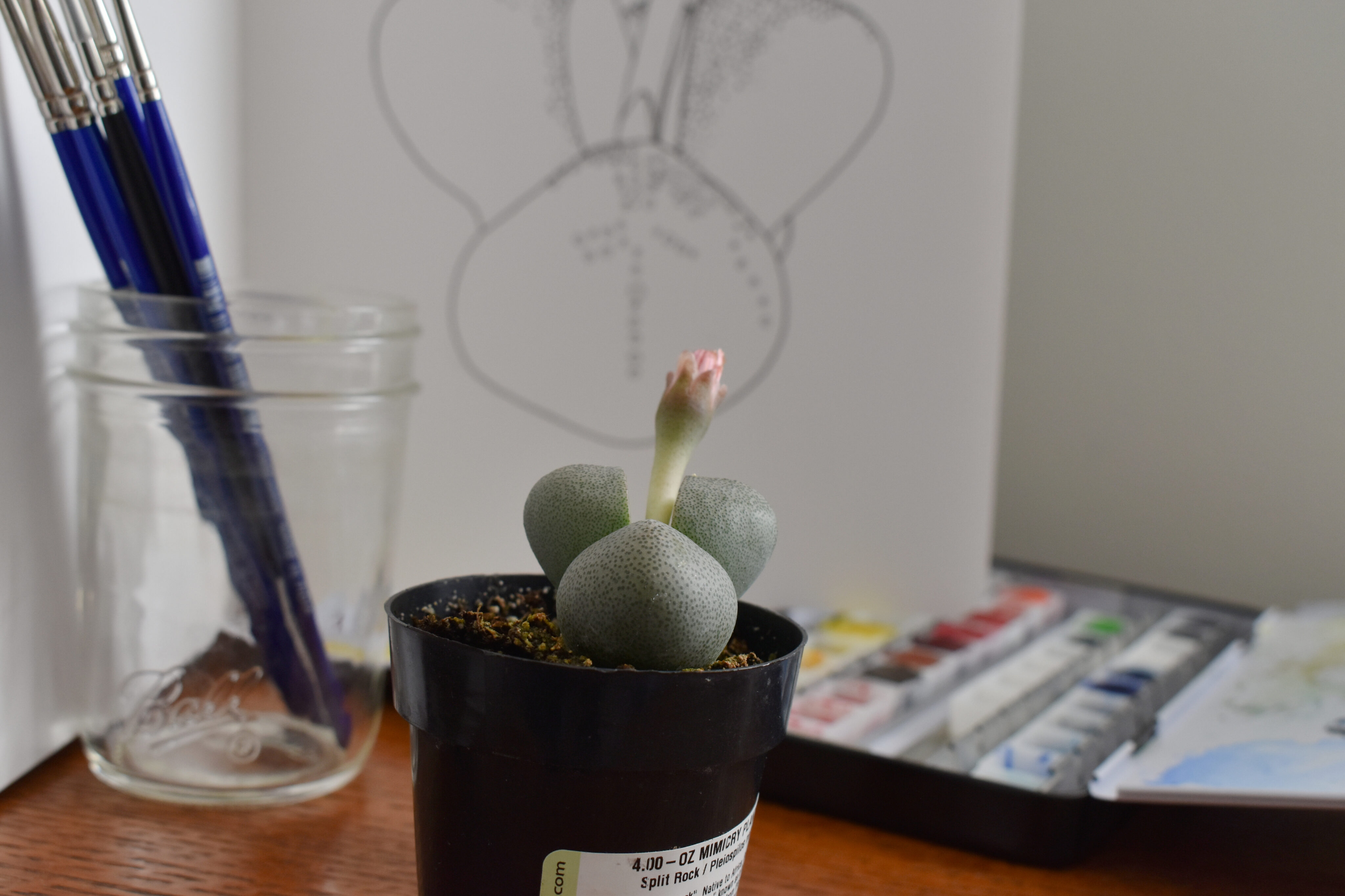
Houseplant art supplies
I mostly create watercolor sketchbooks or ink drawings. My favorite pens to use are Segura Pigma Micron pens in the .05 and .01 size. For outlines, I use the .05, and then go back for fine details with the .01.
I enjoy using Sennelier watercolor paints, and I’ve also heard good things about Windsor Newton. When working in ink and watercolor, it can be challenging to find sketchbook paper that won’t bleed through. I prefer Stillman & Birn. The Zeta series has bright white paper and a smooth finish and is the one I use. If you prefer cold press paper, the Beta series has white paper and the Delta series comes in Ivory.
Here are affiliate links to my favorites at Blick Art Supplies!
Stillman & Birns Zeta Series Notebooks (#ad)
Sennelier Watercolor Paints (#ad)
Blick Art Supplies Sable Watercolor Brushes (#ad)
Watercolor Custom Palette Tins (#ad)
Empty Watercolor Half Pans (#ad)
Where to find subjects for houseplant art
If you need to find more indoor plants for your project, I’ve had really good luck with home improvement stores in early spring. Also, search for local nurseries and visit them to see what they have! I’m lucky to have a nursery in my town with an entire greenhouse devoted to indoor plants. They are absolutely beautiful and have a great inventory year-round.
You may even find indoor plants at a grocery store in their floral department. However, these plants may be overwatered or left in less-than-ideal conditions on a sidewalk. So keeping them alive once you bring them home gets tricky!
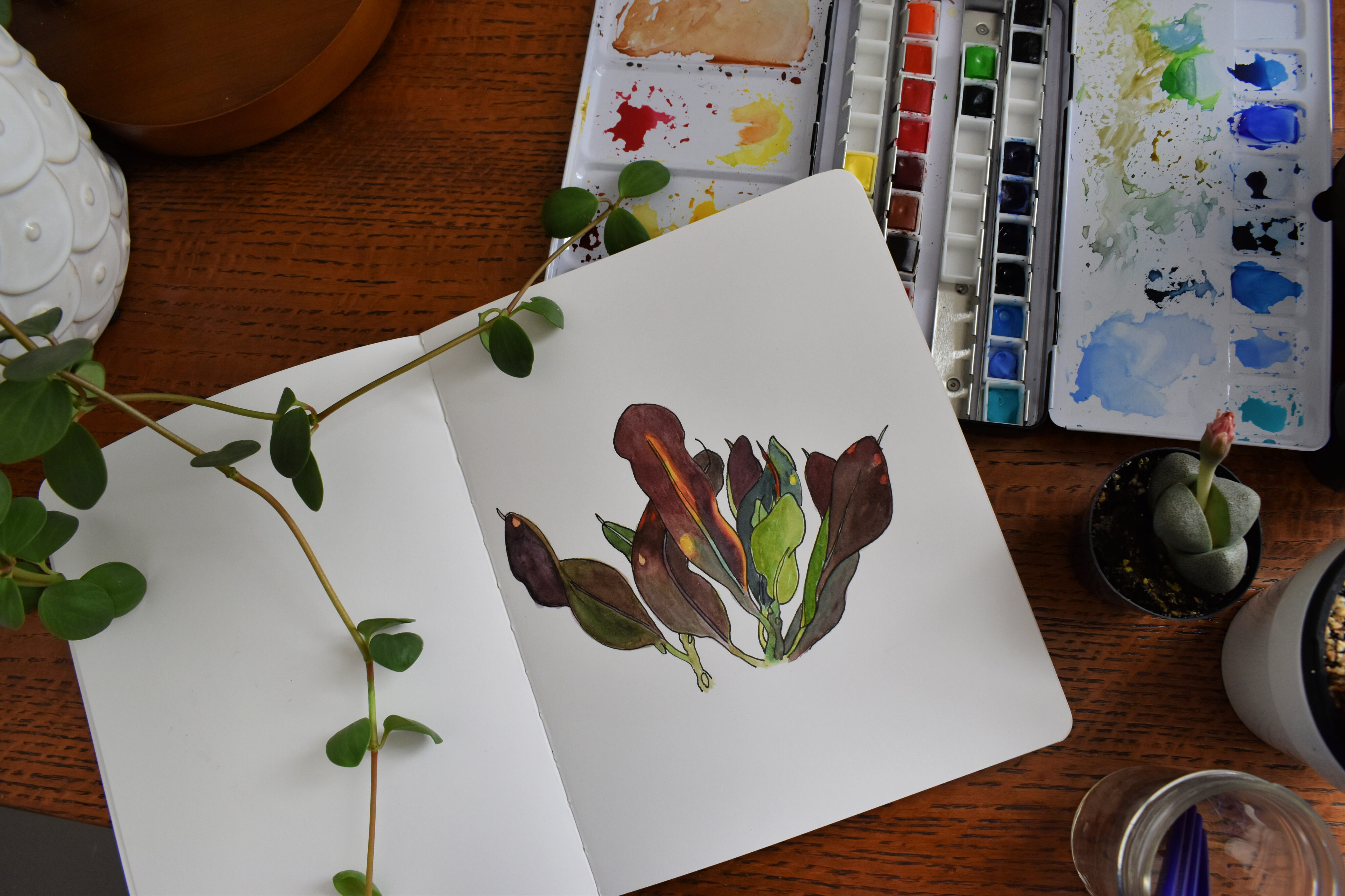
Tips for your sketchbook
Here are a few things I’ve figured out as I worked in my sketchbook. They may make it easier for you, too!
- Skip pages and don’t work chronologically. I find it helps me keep a fresh eye and keeps me from falling into a rut if I have a few pictures I’m not happy with. Having my least favorite pieces sprinkled around in my sketchbook makes it easier to ignore them!
- Try for a variety of plants. I like succulents and plants more than cacti, but that’s my preference! I have recently added a few cacti to my plant shelf and I can’t wait to add them to my sketchbook.
- Observe your plants during different times of the year. Many of my plants turn interesting shades of red and pink when they grow in the spring. The colors fade to green during the summer. You may want to do another drawing of the same plant during different seasons.
- Learn about each plant’s needs. If you’ve never taken care of houseplants before, take time to learn about how much water each one needs. During the summer, some plants need water 1-2 times a week, but may not need any water during the winter. Watering the soil and not the leaves also helps your plants stay healthy.
What can you make with houseplant art?
Having a cool sketchbook is nice, but you don’t have to stop there. Once you have a finished piece, you can use online print-on-demand services. Scan and upload your drawing and turn it into pillows, posters, or a canvas. Or add it to coffee mugs, tote bags, or almost anything else you can think of! Alternatively, you can print it onto stationary like thank you notes or notebook covers.
Have fun with your project!
Making time in your schedule to work on your indoor plant sketchbook is worth it. If you work on it regularly, you’ll quickly fill up the pages and have a really fun project to be proud of. It’s a great way to nurture your creativity and explore making botanical art.
